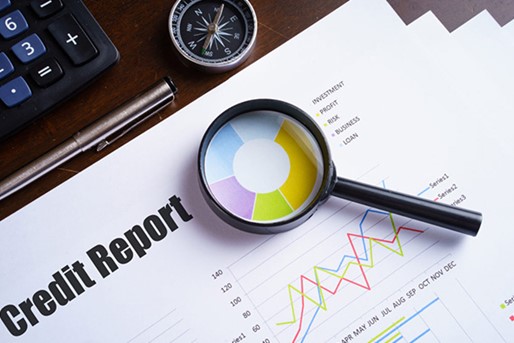Checking for Errors on Your Credit Report

Your credit report is a record of how well you manage credit. Errors on your credit report can give lenders the wrong impression. If there’s an error on your credit report, a lender may turn you down for credit cards or loans. You could even be charged you a higher interest rate.
Errors can also be a sign that someone is trying to steal your identity. They may be trying to open credit cards, mortgages or other loans under your name. Take a close look at your credit report at least once a year to see if there are any errors.

Errors to Watch Out for on Your Credit Report:
Once you get your report, check for
- Mistakes in your personal information, such as a wrong mailing address or incorrect date of birth
- Errors in credit card and loan accounts, such as a payment you made on time that is shown as late
- Negative information about your accounts that is still listed after the maximum number of years it’s allowed to stay on your report
- Accounts listed that you never opened, which could be a sign of identity theft
A credit bureau can’t change accurate information related to a credit account on your report. For example, if you missed payments on a credit card, paying the debt in full or closing the account won’t remove the negative history.
Negative information such as late payments or defaults only stays on your credit report for a certain period of time.
Check Your Credit Report for Fraud:
Look for accounts that don’t belong to you on your credit report. Accounts that you don’t recognize could mean that someone has applied for a credit card, line of credit, mortgage or other loan under your name. It could also just be an administrative error. Make sure it’s not fraud or identity theft by taking the steps to have it corrected.
If you find an error on your credit report, contact lenders and any other organizations that could be affected. Tell them about the potential fraud.
If it’s fraud, you should:
- Contact Equifax Canada and TransUnion Canada to inform them about the fraud
- Ask to put a fraud alert on your credit report
- Report it to the Canadian Anti-fraud Centre
The Canadian Anti-Fraud Centre is the central agency in Canada that collects information and criminal intelligence on fraud and identity theft.

Add a Fraud Alert
A fraud alert, or identity verification alert, tells lenders to contact you and confirm your identity before they approve any applications for credit. The aim is to prevent any further fraud from happening.
Ask the credit bureaus to put a fraud alert on your credit report if:
- You’ve been a victim of fraud
- Your wallet has been stolen
- You’ve had a home break-in
You may need to provide identification and a sworn statement to prove that you’ve been a victim of fraud.
You can set up a fraud alert for free with Equifax. TransUnion charges a fee of $5 plus taxes to set up a fraud alert.

Fix Errors on Your Credit Report
You have the right to dispute any information on your credit report that you believe is wrong. You may ask the credit bureaus to correct errors for free.
Step 1: Support Your Case
Gather receipts, statements and other documents related to your credit accounts. You may need them to prove your claim.
Step 2: Contact the Credit Bureaus
Both Equifax Canada and TransUnion Canada have forms for correcting errors and updating information. Fill out the form to correct errors:
Before the credit bureau can change the information on your credit report, it will need to investigate your claim. It will check your claim with the lender that reported the information.
If the lender agrees there is an error, the credit bureau will update your credit report.
If the lender confirms that the information is correct, the credit bureau will leave your report unchanged.
Step 3: Contact the Creditor
You may be able to speed up the process by contacting the creditor yourself about the error. The creditor is the company you owe money to. Ask them to verify their files and provide the credit bureaus with updated information.
Step 4: Escalate your Case
Ask to speak with someone at a higher level at the credit bureau or at your financial institution if you’re not satisfied with the results of the investigation.
Federally regulated financial institutions must have a complaint-handling procedure to help resolve disputes between consumers and their financial institutions. This procedure includes a third-party dispute-resolution body.
Step 5: Add a Consumer Statement
If the credit bureau confirms the information is accurate but you’re still not satisfied, submit a brief statement to your credit report explaining your position. It’s free to add a consumer statement to your credit report. TransUnion lets you add a statement of up to 100 words. Equifax lets you add a statement of up to 400 characters to your credit report. Lenders and others who review your credit report may consider your consumer statement when they make their decisions.

If you have any further questions, our knowledgeable agents are here to help! If you’re thinking about credit repair, chances are you’re going to have a hard time securing approval for a car loan. Have you considered giving us here at autoloans.ca a call? We afford every application we receive the same decision process, meaning that no matter how bad your credit score is, you’ll get the same degree of attention and care as everybody else.

